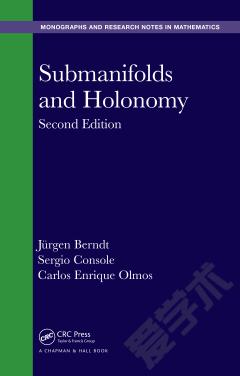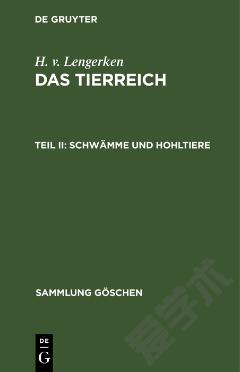Submanifolds and Holonomy
Basics of Submanifold Theory in Space Forms The fundamental equations for submanifolds of space forms Models of space forms Principal curvatures Totally geodesic submanifolds of space forms Reduction of the codimension Totally umbilical submanifolds of space forms Reducibility of submanifolds Submanifold Geometry of Orbits Isometric actions of Lie groups Existence of slices and principal orbits for isometric actions Polar actions and s-representations Equivariant maps Homogeneous submanifolds of Euclidean spaces Homogeneous submanifolds of hyperbolic spaces Second fundamental form of orbits Symmetric submanifolds Isoparametric hypersurfaces in space forms Algebraically constant second fundamental form The Normal Holonomy Theorem Normal holonomy The normal holonomy theorem Proof of the normal holonomy theorem Some geometric applications of the normal holonomy theorem Further remarks Isoparametric Submanifolds and Their Focal Manifolds Submersions and isoparametric maps Isoparametric submanifolds and Coxeter groups Geometric properties of submanifolds with constant principal curvatures Homogeneous isoparametric submanifolds Isoparametric rank Rank Rigidity of Submanifolds and Normal Holonomy of Orbits Submanifolds with curvature normals of constant length and rank of homogeneous submanifolds Normal holonomy of orbits Homogeneous Structures on Submanifolds Homogeneous structures and homogeneity Examples of homogeneous structures Isoparametric submanifolds of higher rank Normal Holonomy of Complex Submanifolds Polar-like properties of the foliation by holonomy tubes Shape operators with some constant eigenvalues in parallel manifolds The canonical foliation of a full holonomy tube Applications to complex submanifolds of Cn with nontransitive normal holonomy Applications to complex submanifolds of CPn with nontransitive normal holonomy The Berger-Simons Holonomy Theorem Holonomy systems The Simons holonomy theorem The Berger holonomy theorem The Skew-Torsion Holonomy Theorem Fixed point sets of isometries and homogeneous submanifolds Naturally reductive spaces Totally skew one-forms with values in a Lie algebra The derived 2-form with values in a Lie algebra The skew-torsion holonomy theorem Applications to naturally reductive spaces Submanifolds of Riemannian Manifolds Submanifolds and the fundamental equations Focal points and Jacobi fields Totally geodesic submanifolds Totally umbilical submanifolds and extrinsic spheres Symmetric submanifolds Submanifolds of Symmetric Spaces Totally geodesic submanifolds Totally umbilical submanifolds and extrinsic spheres Symmetric submanifolds Submanifolds with parallel second fundamental form Polar Actions on Symmetric Spaces of Compact Type Polar actions - rank one Polar actions - higher rank Hyperpolar actions - higher rank Cohomogeneity one actions - higher rank Hypersurfaces with constant principal curvatures Polar Actions on Symmetric Spaces of Noncompact Type Dynkin diagrams of symmetric spaces of noncompact type Parabolic subalgebras Polar actions without singular orbits Hyperpolar actions without singular orbits Polar actions on hyperbolic spaces Cohomogeneity one actions - higher rank Hypersurfaces with constant principal curvatures Appendix: Basic Material Exercises appear at the end of each chapter.
{{comment.content}}








 京公网安备 11010802027623号
京公网安备 11010802027623号